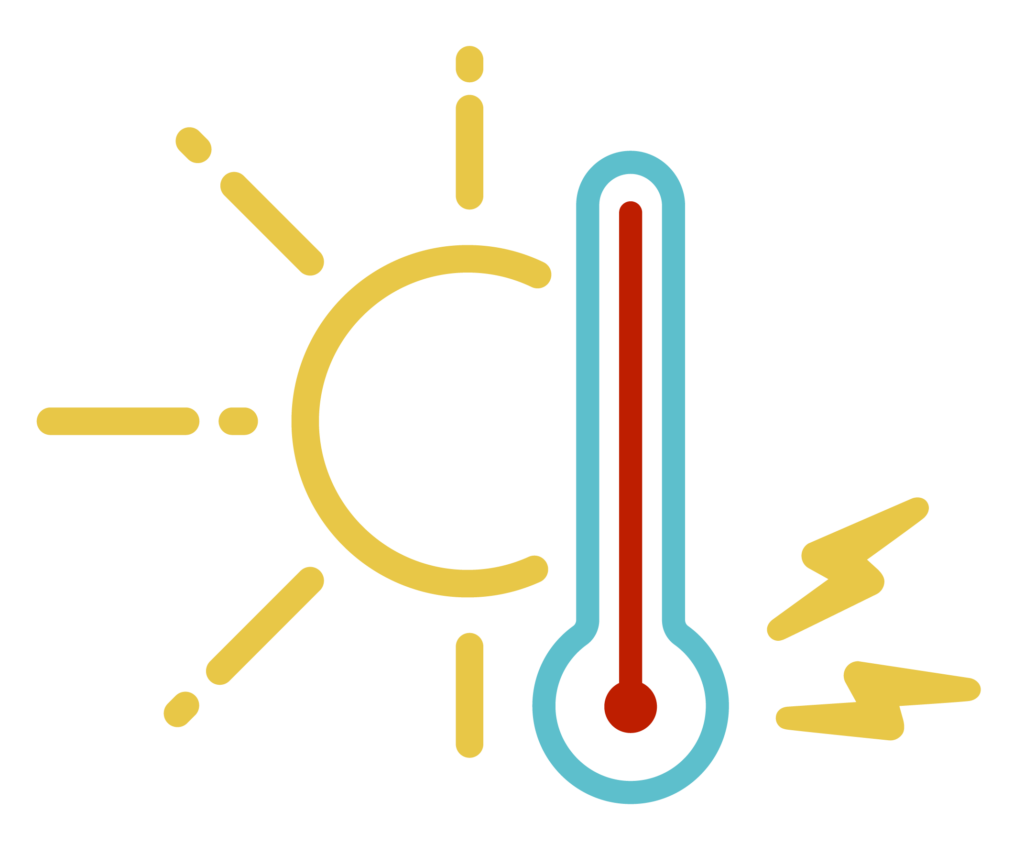Overheating

Many trail races occur in the summer months, often under hot conditions. Managing heat properly can make your experience more enjoyable and improve your performance. It can also save your life.
Prevention
Adaptation
Consider slowly increasing your heat tolerance through training under race conditions and under the heat. This can increase your plasma volume and sweat rate which can help you cool more effectively. Passive adaptations such as sauna sessions can also be helpful.
Appropriate hydration
Staying well hydrated (BUT NOT OVERHYDRATED) can aid your body in cooling. Consider testing your sweat rate to personalize your hydration.
Wearing appropriate clothing
Clothing that will allow for ventilation and not trap radiant heat is best, i.e. looser fitting, airy lighter colors. Also protecting your skin from radiant heat including a hat can be helpful.
Periodic cooling during the event
Dunking in creeks, ice baths, spraying with cold water, ice in the hat/bandana/sleeves or even high tech solutions such as ice/cooling vests.
Match effort level to conditions
On an extremely hot day, you may need to revaluate goal times and moderate your effort.
Heat related illness is a spectrum from mild to life threatening. In all cases, early management is important.
Overheating
Not truly a heat related illness but the most common and easiest to turn around. You may feel hot, lower effort levels may feel harder but otherwise feel able to continue.
Treatment (similar to prevention)
Appropriate hydration
Staying well hydrated (BUT NOT OVERHYDRATED) can aid your body in cooling. Consider testing your sweat rate to personalize your hydration.
Wearing appropriate clothing
Clothing that will allow for ventilation and not trap radiant heat is best, i.e. looser fitting, airy lighter colors. Also protecting your skin from radiant heat including a hat can be helpful.
Periodic cooling during the event
Dunking in creeks, ice baths, spraying with cold water, ice in the hat/bandana/sleeves or even high tech solutions such as ice/cooling vests.
Match effort level to conditions
On an extremely hot day, you may need to revaluate goal times and moderate your effort.
Heat Exhaustion
Progressing from overheating you may notice high heart rate, extreme weakness, lightheadedness, profuse sweating, “prickly heat”, headache, abdominal cramps, nausea, vomiting, diarrhea.
Treatment
Stop running
Begin cooling and seek medical attention.
Timely cooling is important
Immersion in a creek is best, other methods such as spraying with water and fanning, ice packs, and getting out of direct sunlight are also helpful.
You should not return to the race
Repeated episodes of heat exhaustion will put you at high risk for heat stroke.
Heat stroke
Similar symptoms as heat exhaustion with additional symptoms such as confusion, headache, irrational behavior, irritability, emotional instability, altered consciousness, coma, or seizure. THIS IS A MEDICAL EMERGENCY AND YOU NEED TO BEGIN COOLING QUICKLY AND AGGRESSIVELY.
Treatment
Begin cooling and seek medical attention including need for transport to the hospital. Immersion in a creek is best, other methods such as spraying with water and fanning, ice packs, and getting out of direct sunlight are also helpful.
